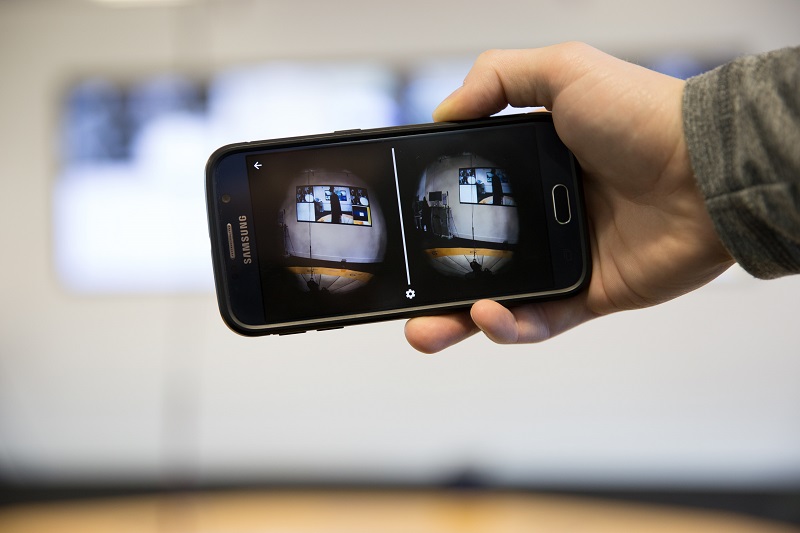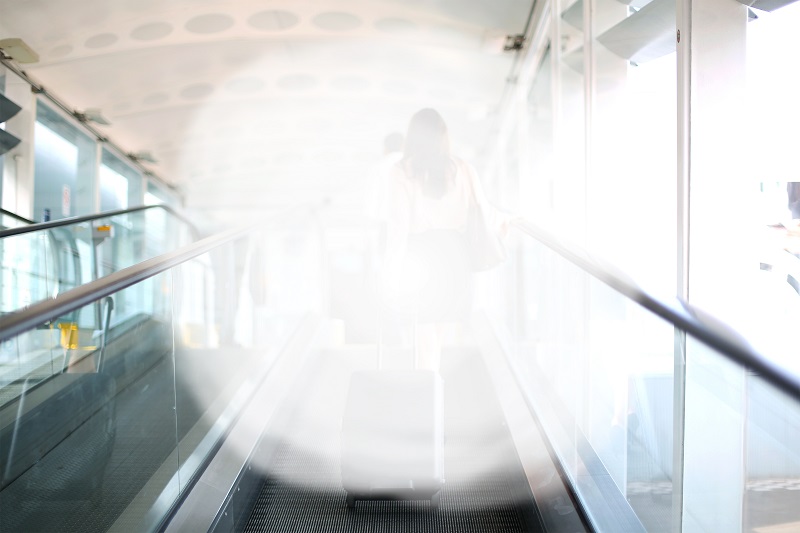Eyeware app
A virtual reality tool has been created to help designers improve buildings and public transport for people with sight loss.
Royal National Institute of Blind People (RNIB) statistics suggest that more than two million people in the UK are affected by sight loss, and by 2050, this will double to nearly four million. Findings from the RNIB’s 2015 ‘My Voice’ survey revealed that 40% of blind and partially-sighted people were not able to make all the journeys they wanted or needed to because of a lack of accessibility.
The smartphone app – Eyeware - launched in March 2017, allows users to experience the world around them from the viewpoint of people with a range of different sight loss conditions. Eyeware was developed in collaboration with RNIB and applies virtual filters over the surrounding environment which mimic sight loss conditions in real time.
Users can experience simulations of diabetic retinopathy, retinitis pigmentosa, cataracts and glaucoma.
The filters are being used at the Transport Systems Catapult to help design accessible transport systems at the organisation’s ‘Visualisation Laboratory’. This unique facility is designed to help industry develop virtual reality (VR) and augmented reality (AR) applications.
Project leader Martin Pett, Principle Technologist at the Transport Systems Catapult, said; “Urban environments like stations and new technology, can be confusing for anyone, but the difficulties this causes can be increased 10-fold when someone is blind or partially sighted. Our app allows users to put themselves in the shoes of people with sight loss conditions, so they can make better decisions about accessibility. Not only are we aiming to raise awareness of these disabilities, but our app will also have practical applications. For instance, we are helping architects design stations that are easily navigable for people with sight loss and looking at ways to make self-driving cars more accessible.”
The app is available to the public as an educational tool to help increase awareness of eye conditions. It is available for download from the Apple store and Google Play store. You can find more here.
Images and content courtesy of Catapult.
[edit] Related articles on Designing Buildings Wiki
- Accessibility in the built environment.
- Artificial intelligence and civil engineering.
- Augmented reality in construction.
- Caution Cinema.
- Gravity Sketch.
- Guide Dogs' Inclusivity campaign.
- Immersive Hybrid Reality IHR.
- People with disabilities.
- The Palimpsest.
- TruVision.
- Virtual construction model.
- Virtual reality and manufacturing.
- Virtual reality in construction.
Featured articles and news
Gregor Harvie argues that AI is state-sanctioned theft of IP.
Many resources for visitors aswell as new features for members.
Using technology to empower communities
The Community data platform; capturing the DNA of a place and fostering participation, for better design.
Heat pump and wind turbine sound calculations for PDRs
MCS publish updated sound calculation standards for permitted development installations.
Homes England creates largest housing-led site in the North
Successful, 34 hectare land acquisition with the residential allocation now completed.
Scottish apprenticeship training proposals
General support although better accountability and transparency is sought.
The history of building regulations
A story of belated action in response to crisis.
Moisture, fire safety and emerging trends in living walls
How wet is your wall?
Current policy explained and newly published consultation by the UK and Welsh Governments.
British architecture 1919–39. Book review.
Conservation of listed prefabs in Moseley.
Energy industry calls for urgent reform.
Heritage staff wellbeing at work survey.
A five minute introduction.
50th Golden anniversary ECA Edmundson apprentice award
Showcasing the very best electrotechnical and engineering services for half a century.
Welsh government consults on HRBs and reg changes
Seeking feedback on a new regulatory regime and a broad range of issues.
CIOB Client Guide (2nd edition) March 2025
Free download covering statutory dutyholder roles under the Building Safety Act and much more.



























